Are your employees becoming disengaged?
Disengaged employees are a significant problem for businesses looking to remain productive and profitable. They not only produce poor work themselves, but drag the whole team down with them. They are simply a problem that needs to be considered, to be dealt with.
If you’re reading this now, then you’re probably looking for solutions. In this article we’ll cover everything you need to know, including:
- Why employees become disengaged
- How much it’s costing you
- How to identify them
- How to re-engage them
So, if you want to improve your bottom line through increased employee productivity, keep reading.
Why Do Employees Become Disengaged?
There are a variety of reasons why employees might become disengaged. Some of them include:
- Bad Management: Lack of communication, feedback and recognition.
- Stagnant Career Growth: Employees feel they’re not given opportunities to climb the ladder.
- Poor Salary: Employees less motivated to do the work required when they’re not getting paid what they feel is fair.
- Bad Leadership: Lacking transparency, leading to poor communication.
- Large Workload: Employees overworked, leading to stress and work-life disruption.
- No Recognition: Employees not being recognized for their efforts and contributions
- Insufficient Training: Employer does not provide the adequate education employees need to adequately perform their jobs.
What's the Cost of Disengaged Employees?
According to a study from Gallup, the cost of a disengaged employee is 34% of their salary. This means, for every $10,000 they earn, their employer misses out on $3,400. It gets scarier when you realize that only 21% of employees are highly engaged at work.
When extrapolated to the entire US economy, disengaged employees cost around $350 billion annually.
This is not surprising when you consider that disengaged employees have:
- 37% greater absenteeism rate
- 18% less productivity
- 15% less profitability
It’s also important to note that as employee disengagement increases, so too does staff turnover. This inevitably leads to more onboarding and training expenses for employers.
Engaged vs Disengaged Employees - How to Identify Disengaged Employees?
How exactly do you identify disengaged employees?
There are many “tells” that cue you in to whether an employee is engaged or not. Disengaged employees behave in specific ways that are detrimental to your organizational success.
Here’s a list of behaviors that you should look for:
- Always Late
- Frequently Absent
- Low Quality Work
- Stagnancy
- Complaining
- Changes Jobs Frequently
- Always Causing Problems
Always Late
Employees that aren’t engaged tend to always be running late. They are late getting to work in the morning, and take too long during toilet and lunch breaks.
Being late on rare occasions doesn’t necessarily indicate disengagement, but if it becomes a habit, there’s probably something there.
Frequently Absent
Disengaged employees not only get to work later, they also take more days off.
Every employee has allocated to them, a certain number of sick days per year, which is their right to use. Employees that are disengaged tend to use more of these days, and be strategic with them. For example, they might take days off during deadlines.
Low Quality Work
The quality of an employee’s work is a good indicator of whether they’re engaged or not. Disengaged employees will fail to meet deadlines, or they’ll simply rush the job, comprising quality.
Stagnancy
Employees that are actively engaged look to continually improve themselves. They seize opportunities available to them, in order to further their career. On the other hand, disengaged employees are complacent — they are content with where they are.
Complaining
If an employee tends to complain a lot, there’s a good chance that they’re disengaged. Now, they might not necessarily complain about their job, but they might take issue with other work related issues.
Their complaints might actually be valid, but if they’ve made a habit of it, they might be projecting. They could perhaps be telling you secretly that they’re unhappy with their employment.
Changes Jobs Frequently
An employee that doesn’t stay in one place for long is clearly one that lacks engagement. Taking a look at an individual’s work experience on their resume will be very telling. They might already have one foot out the door, and you don’t even know about it.
Always Causing Problems
Employees tend to express their disengagement as frustration and aggression. If an individual continually butts heads with management or other workers, they might be secretly telling you they’re unhappy.
Engaging and Motivating Disengaged Employees: 7+ Ways On How to Deal With Disengaged Employees
Below, you’ll find 7+ ways to re-engage your disengaged employees, complete with real-life examples successful companies actually use.
1. Provide a Wellness Allowance
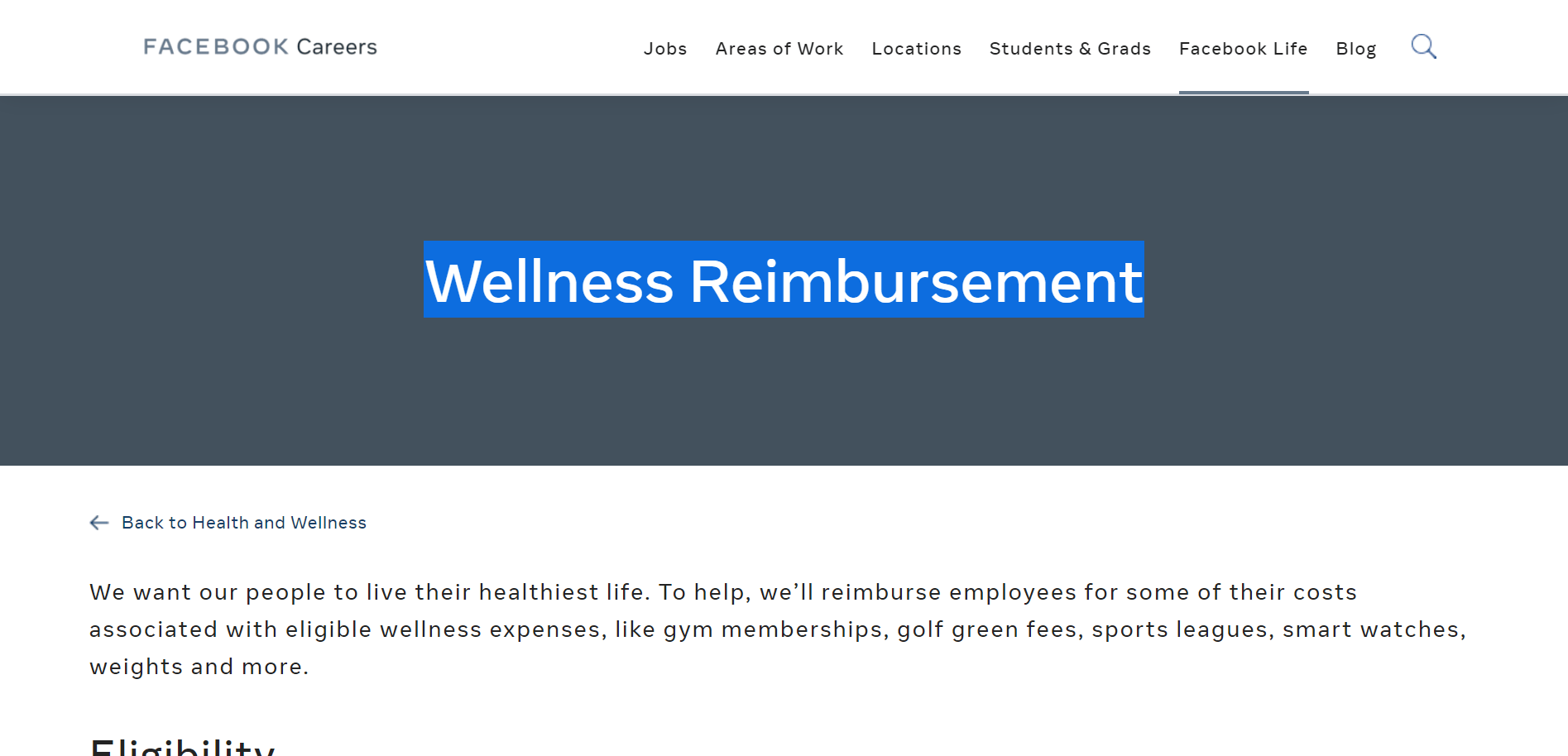
The health, fitness, and wellness of your employees is crucial to how engaged they are at work. If these things are compromised, it could lead to poor performance, negatively affecting your business. This is why many organizations opt to support the wellness of its workers.
A wellness allowance is a financial reimbursement that employers provide their employees with. It’s part of a larger organizational policy, designed to encourage positive health behavior and outcomes. It’s definitely an effective strategy to re-engage distant employees.
The allowance will typically cover costs such as:
- Gym memberships
- Fitness equipment
- Personal training lessons
- Recreational sporting leagues
- Races/events
- Retreats
- Clinics
Some wellness allowances will extend to dietary and stress issues, but it depends on the specifics of the organization. Most will simply cover exercise expenses, such as the list above.
A great real-life example is Facebook — every year they allow employees to write off up to $720 in wellness expenses. All employees are eligible, including part timers and interns who work at least 20 hours per week. All they have to do is provide receipts for eligible expenses.
You can get started implementing a wellness by conducting some research — a poll or survey perhaps. Find out how many employees exercise, and what are the associated expenses. Ask them whether they’d appreciate financial support.
2. Offer a Flexible Work Program
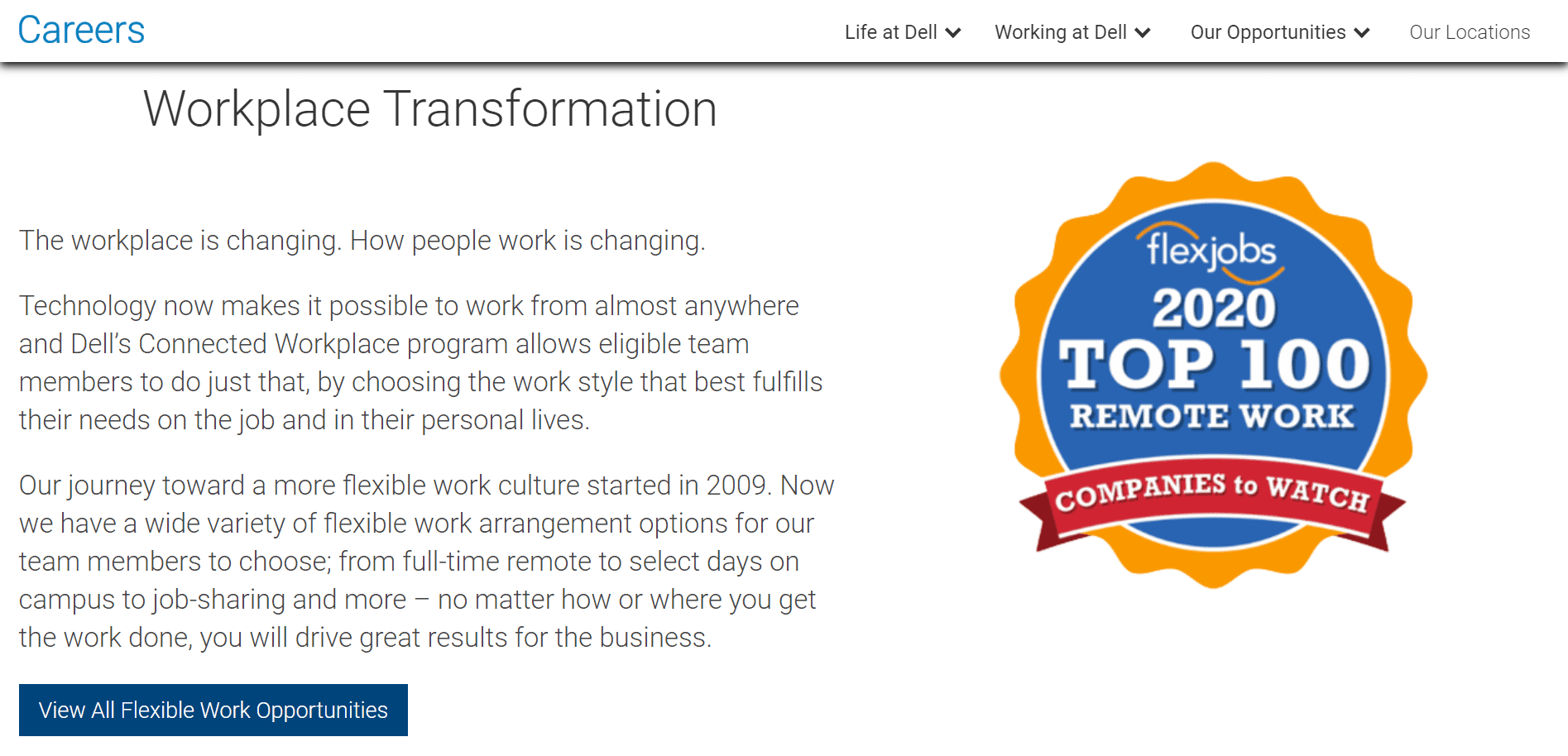
The hours that a job requires can be a major sticking point for many employees. Many businesses keep their workforce engaged by offering a flexible work program. Known as a “flexible work arrangement,” employees have freedom to work when they want.
The concept focuses on improving the work-life balance, improving stress and increasing employee engagement and satisfaction.
Dell is a great real-life example of a company implementing a flexible work program to its workers. Employees are allowed to choose a varied work schedule, and can choose to work where they want. If they want to, they can work in the office, at home, or even on holiday overseas.
To get started, find out whether or not your business can be run with a flexible work program. Can employees work remotely? Do they have to be in office? These are questions you must answer.
3. Support and Further Their Education
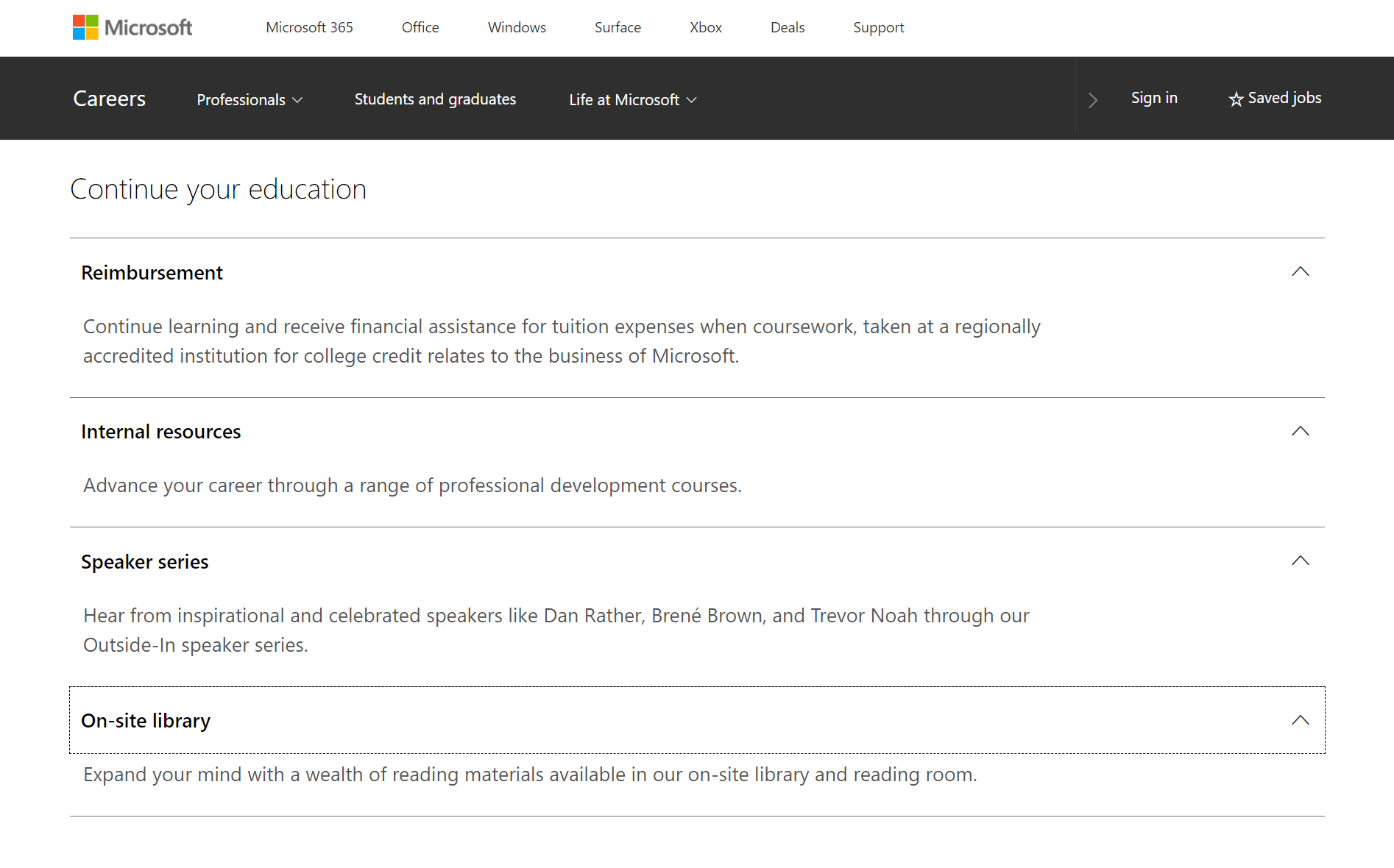
As businesses try to keep up with evolving technology, employees continually require new skill sets. If they don’t have the educational resources to learn these things, their job can get hard. This not surprisingly generally leads to a lack of motivation and engagement.
To keep employees motivated and engaged, many organizations will support and further education and learning. They’ll provide a variety of different resources and tools, such as:
- Tuition reimbursement
- Developmental courses
- Speaking events
- An on-site library
Microsoft is an organization that offers all of the above. For tuition reimbursement, employees are assisted to the amount of $10,000 per year. The caveat is that the course has to be from an accredited college/university. It also must be related to their employment at Microsoft.
To get started, uncover what skills are required of your workers, and find out what courses are related. Then ask them whether or not going back to college/university could help them perform their job.
4. Provide Commuting Financial Support
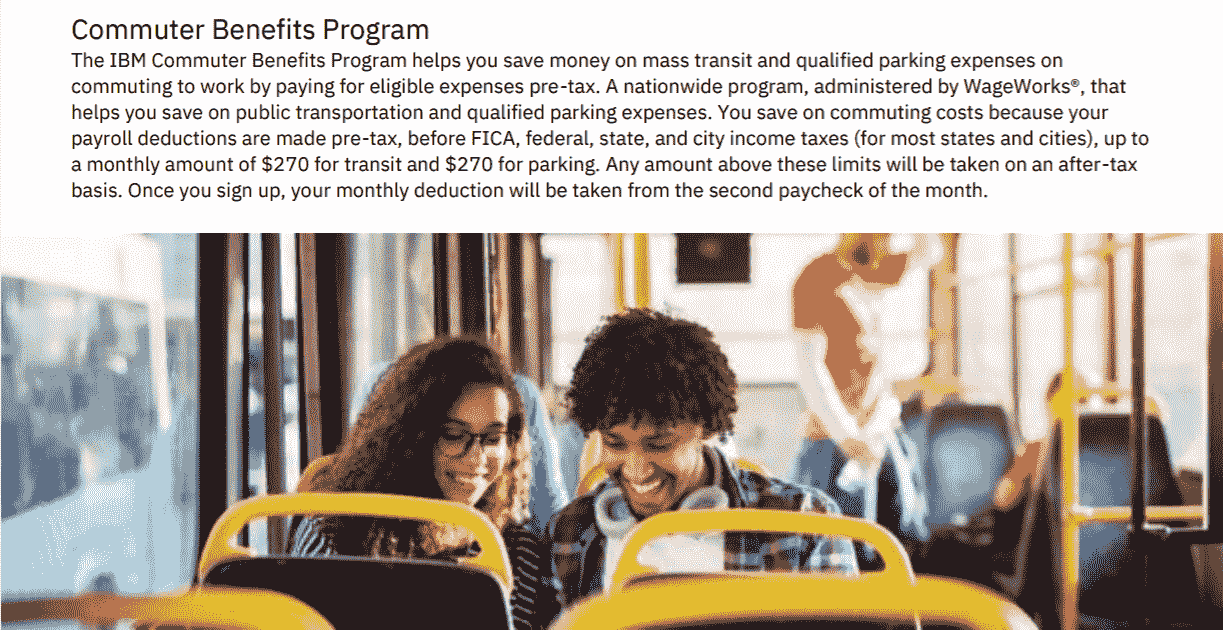
The journey to and from work can often be a problem for many employees, leading to disengagement. To counter this, many organizations offer commuting financial support, to ease the burden.
There are a variety of different ways businesses provide commuting support to employees. Most will take advantage of tax incentives — the ability to write off public transportation costs. Others will even go as far as offering a fuel card.
IBM offers its workforce the “Commuter Benefits Program,” which helps employees to and from work. Every employee is allowed $270 per month for transit, and another $270 per month for parking. Not all forms of transit and parking are eligible — it’s generally just public transportation and bicycling.
If you’re interested in a commuter benefits/support scheme for your employees, you should do some research. Find out how your workers get to work, and how much it costs. Also ask them if the commute to work has a positive or negative effect on them.
5. Pay Them to Volunteer
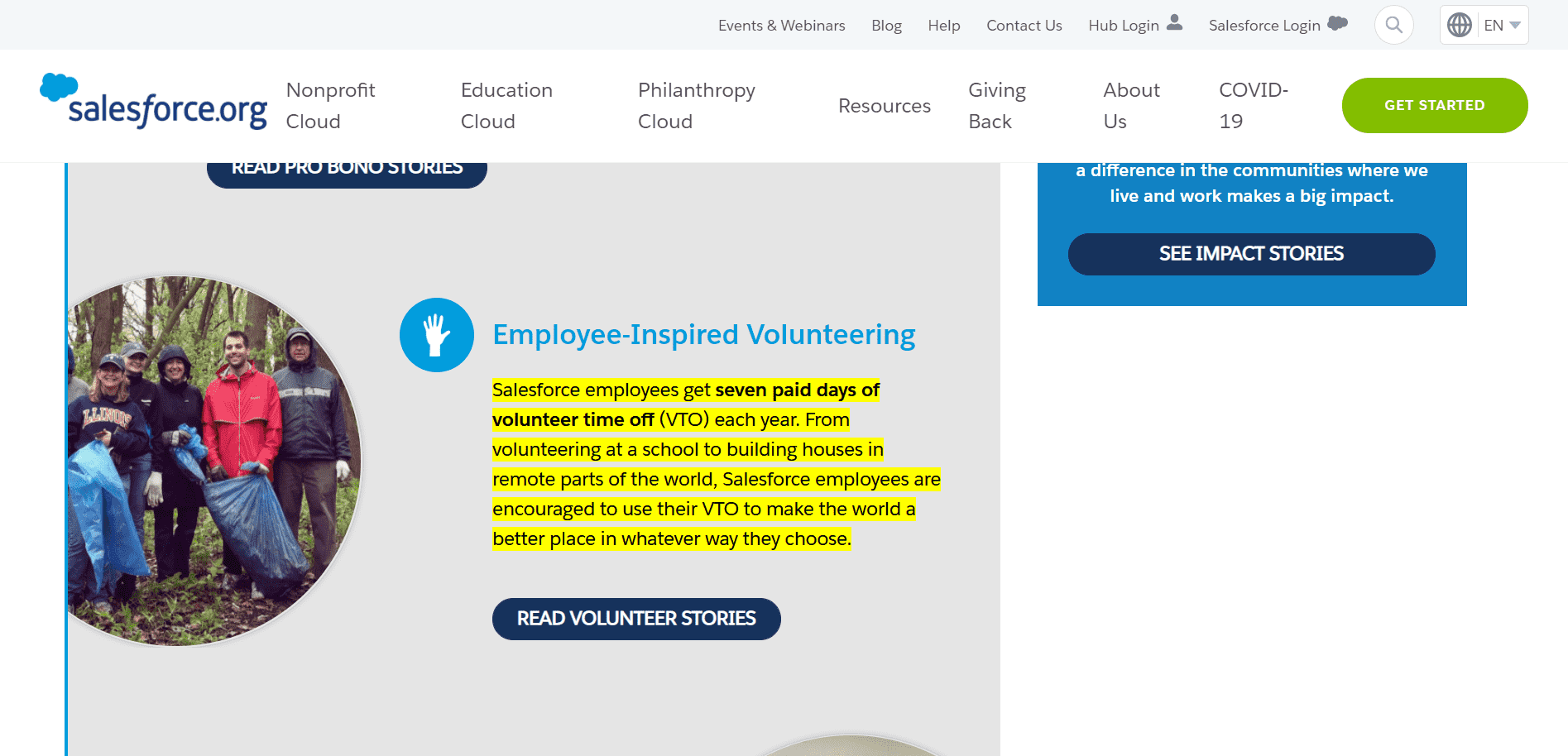
Many employees feel as if they’re simply not making a difference, only acting as a cog in a corporate machine. This feeling of purposelessness can inevitably lead to disengagement from the organization. This is why many employers offer opportunities to give back.
Volunteer time off is an employee incentive many businesses use to help workers feel good about their job. It works similar to normal paid leave, except it’s specifically for volunteering. It’s not the same though — it’s added on top of the leave employees are legally entitled to.
Salesforce is well known for its volunteer time off (VTO) benefit. In fact, the first day working at the company involves going to volunteer. Every employee gets 7 paid days to go volunteer with a charity or activity of their choice.
If this strategy interests your organization, you should research more about the topic. You’ll find that volunteer time off policies vary from company to company. Some — like Salesforce — offer as much as a whole week, where others only 8 hours.
6. Provide Free Meals
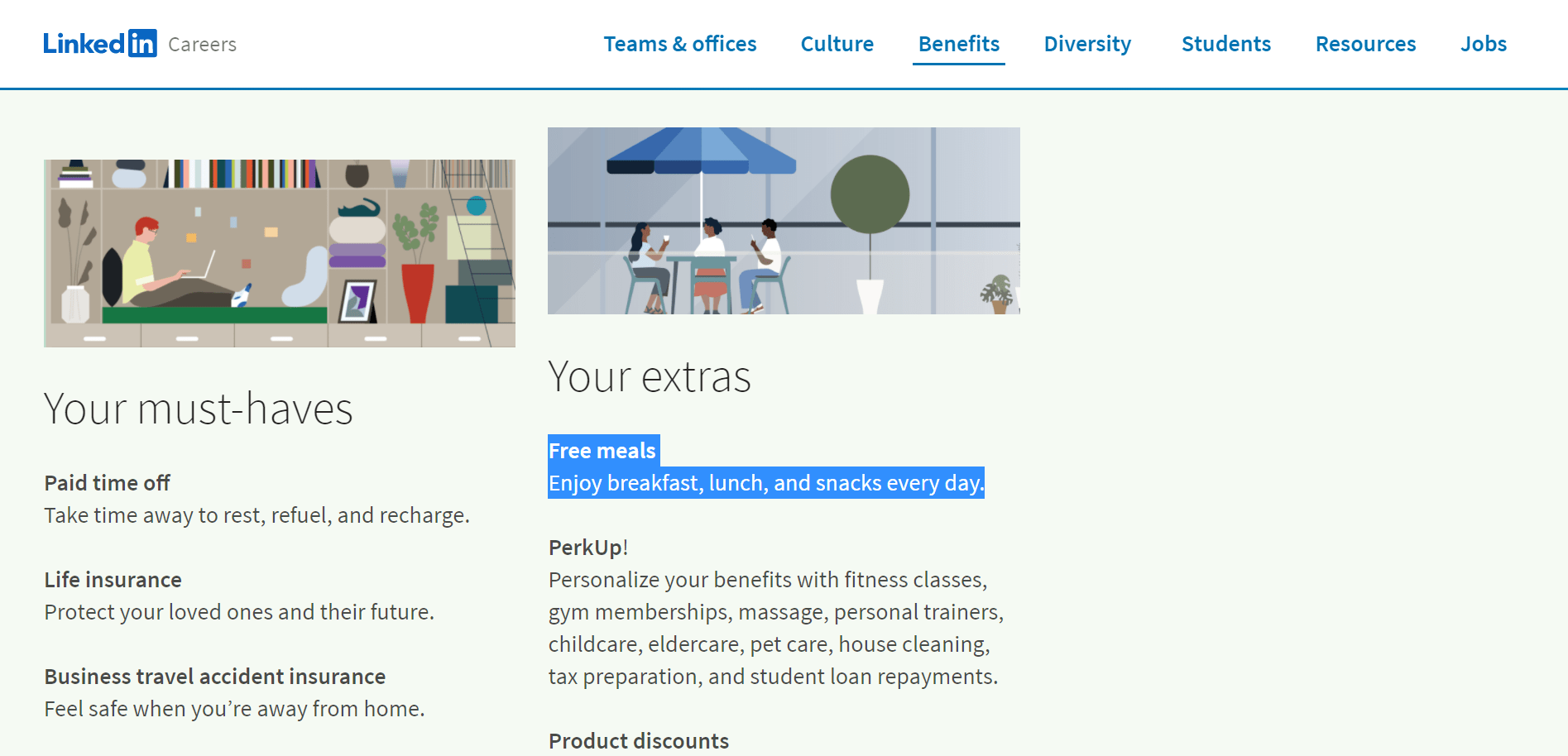
Cost of food and beverages can often be an issue for employees. Preparing healthy, affordable meals is simply not feasible for all, which leaves local alternatives, which can be limited — and expensive. Many organizations see this as an opportunity to boost their benefits package.
Providing free meals to employees is a somewhat new trend that started among the Silicon Valley software companies. Each individual typically gets a breakfast, lunch, and afternoon meal.
The idea behind the strategy is that it’s convenient, saves money, and keeps employees in-house, on campus together. It’s been suggested it has improved cohesiveness because everyone socializes together.
LinkedIn is one example of an organization that believes and practices in providing free meals. They provide free breakfast, lunches and snacks from the on-site cafeteria.
If this sounds like something that’d be ideal for your company, you can start by researching your employee’s food situation. What do they eat? How much does it cost? Do they have to travel during lunch breaks? Is it an inconvenience?
Answering these questions should give you a solid idea regarding whether or not providing free meals is ideal.
7. Help Support Fertility
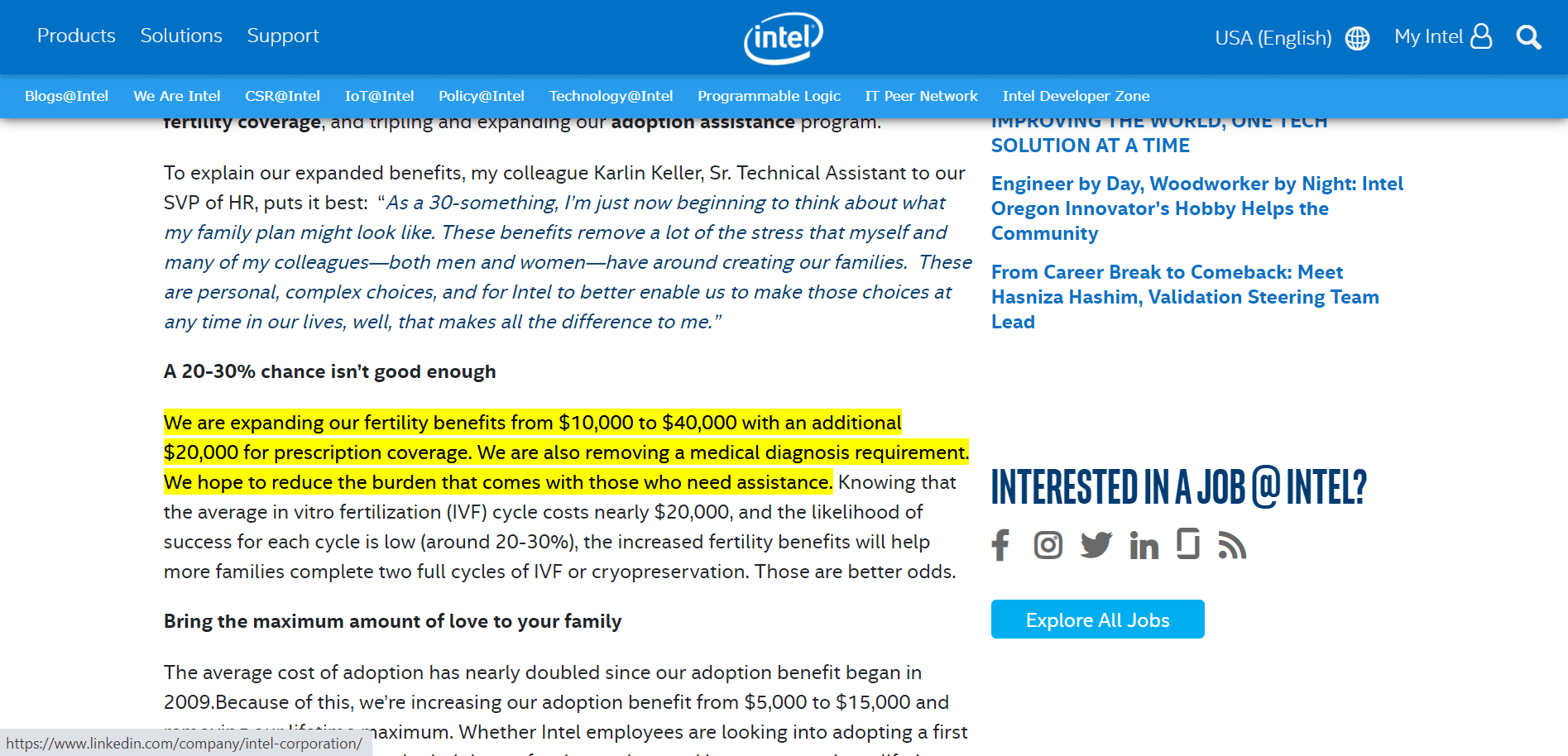
Things in one’s personal life can absolutely influence and affect their professional career. This is why many organizations provide benefits packages that aim to improve the work-life balance. One such benefit that some offer is fertility support.
Fertility benefits aid employees looking to procreate with the services of an IVF clinic. It might also cover related prescription expenses.
Intel is one such company that provides fertility benefits. Every employee is allocated up to $40,000, plus another $20,000 for necessary prescription medication. The average IVF round costs about $20,000, so this is extremely generous, considering the benefit used to only be $10,000.
If this strategy is something your organization might be interested in, consider conducting a company survey. Discover if there are any employees considering IVF, or if it interests them.
Fertility is not a mandatory benefit like parental leave, so this is something you can really gift to employees.
Conclusion
In this article we covered everything you need to know about disengaged employees. We answered questions like:
- Why do employees become disengaged?
- How much do disengaged employees cost?
- How do you identify disengaged employees?
- How do you re-engage disengaged employees?
Employee disengagement is something not to be taken lightly — it costs businesses thousands every year. Consider implementing one of these 7 strategies to re-engage your distant workers. Doing so could improve positive business outcomes, such as productivity and profitability.
Got any questions? Leave a comment below.
